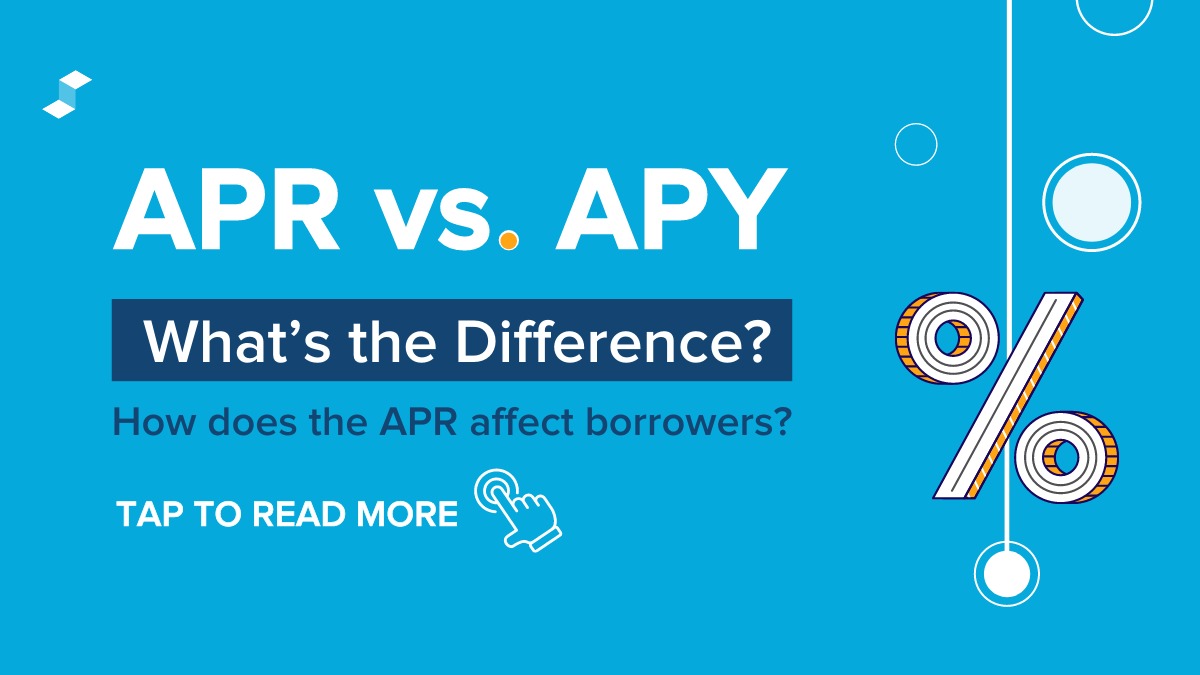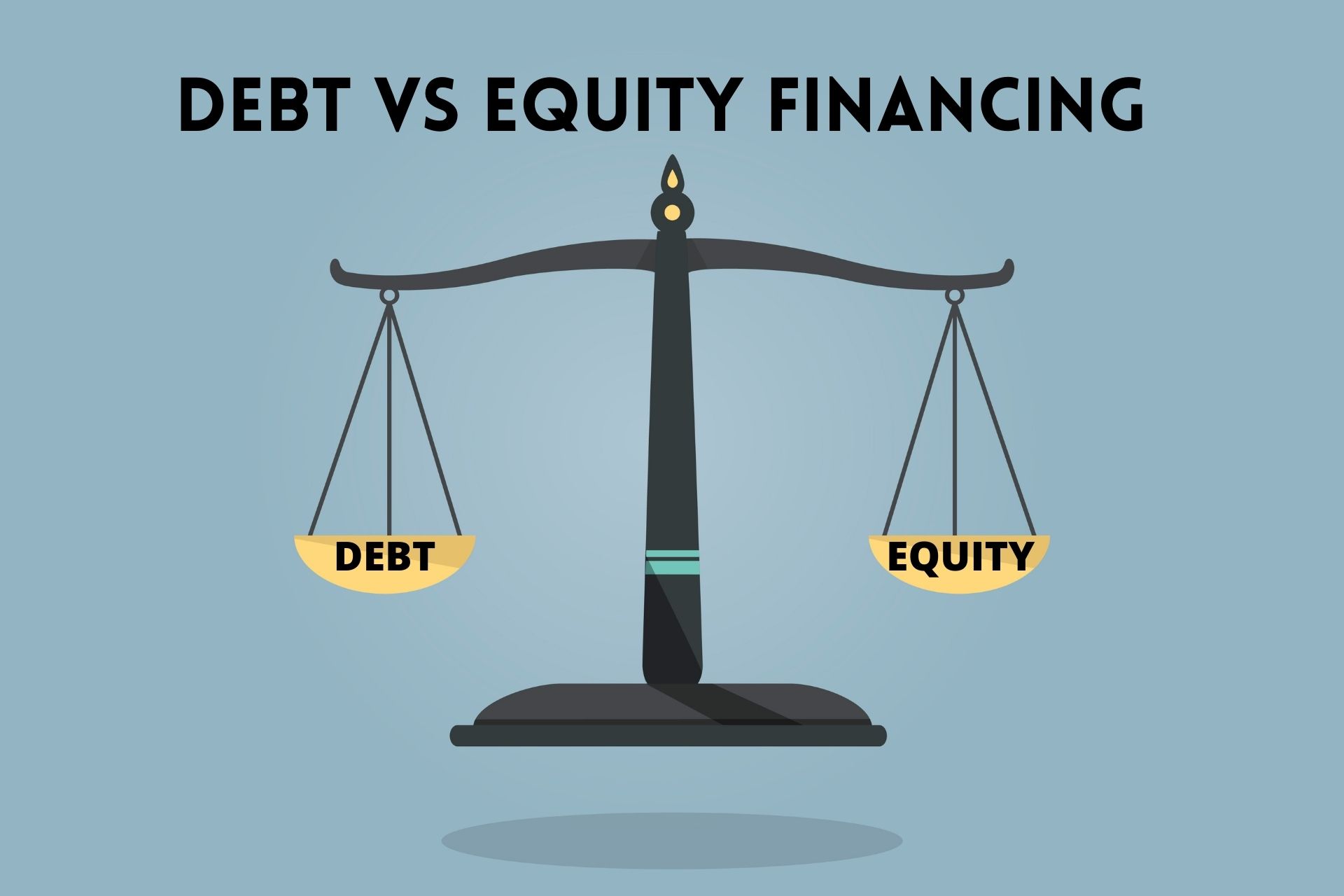Home>Finance>What Is The Difference Between Equity Financing And Debt Financing


Finance
What Is The Difference Between Equity Financing And Debt Financing
Modified: December 30, 2023
Discover the distinction between equity financing and debt financing in the field of finance. Explore the key differences between these two forms of raising capital for businesses.
(Many of the links in this article redirect to a specific reviewed product. Your purchase of these products through affiliate links helps to generate commission for LiveWell, at no extra cost. Learn more)
Table of Contents
- Introduction
- Definition of Equity Financing
- Definition of Debt Financing
- Key Differences between Equity Financing and Debt Financing
- Comparison of Advantages and Disadvantages
- Factors to Consider when Choosing between Equity Financing and Debt Financing
- Examples of Equity Financing
- Examples of Debt Financing
- Conclusion
Introduction
In the world of business and finance, there are various ways for companies to raise capital to fund their operations, expansion plans, or new ventures. Equity financing and debt financing are two common methods that businesses can utilize to acquire the necessary funds. While both options offer advantages and disadvantages, understanding the differences between them is crucial for businesses looking to make informed financial decisions.
Equity financing involves raising capital by selling shares of ownership in a company to investors. In this method, the company does not have to repay the funds received. Instead, investors become partial owners of the business and stand to benefit from its success through stock price appreciation or dividend payments. On the other hand, debt financing involves borrowing money from lenders or financial institutions with an agreement to repay the borrowed amount, typically with interest, over a specific period of time.
The decision between equity financing and debt financing depends on various factors, such as the company’s financial position, growth plans, risk appetite, and the cost of capital. It is essential for businesses to carefully evaluate the advantages and disadvantages of each financing method to determine which option aligns best with their specific needs and objectives.
In this article, we will explore the differences between equity financing and debt financing, compare their advantages and disadvantages, examine the factors to consider when choosing between them, and provide examples of both types of financing.
Definition of Equity Financing
Equity financing is a method by which a company raises capital by selling ownership shares, also known as equity or stock, to investors. When a company decides to pursue equity financing, it offers a portion of its ownership to outside investors in exchange for funds. These investors become shareholders and hold a stake in the company proportional to the number of shares they own.
Equity financing can occur in various forms, including initial public offerings (IPOs), private placements, venture capital investments, and crowdfunding. In an IPO, a company lists its shares on a public stock exchange, allowing individual and institutional investors to purchase them. Private placements involve selling shares to a select group of investors, often institutional investors or accredited individuals. Venture capital investments are made by specialized firms that provide capital to startups and high-growth businesses in exchange for equity ownership. Crowdfunding platforms enable companies to raise funds from a large number of individuals who contribute smaller amounts of money.
One of the primary advantages of equity financing is that it does not require repayment of the funds received. Instead, investors become shareholders and share in the company’s profits and losses. If the company performs well, investors may benefit through stock price appreciation or dividend payments. Additionally, equity financing can provide a long-term source of capital that can support the growth and expansion of the company.
However, equity financing also has its drawbacks. By selling ownership shares, the original owners of the company relinquish a portion of their control and decision-making power. This can lead to differences in opinions and potential conflicts between new investors and existing management. Furthermore, dilution of ownership occurs when new shares are issued, which may result in a reduction of the original owners’ ownership percentage.
In summary, equity financing involves selling ownership shares in a company to investors in exchange for capital. It offers businesses a means to raise funds without incurring debt and provides investors with the potential for financial returns based on the company’s performance. However, it also entails a loss of control and possible dilution of ownership for the existing owners.
Definition of Debt Financing
Debt financing is a method by which a company raises capital by borrowing funds from lenders or financial institutions with an agreement to repay the borrowed amount, generally with interest, over a specified period of time. Unlike equity financing, debt financing involves creating a contractual obligation to repay the borrowed funds within a predetermined repayment schedule.
There are various types of debt financing options available to businesses, including bank loans, lines of credit, bonds, and commercial paper. Bank loans and lines of credit are the most common forms of debt financing, where companies borrow funds from banks or other financial institutions and repay the loan amount along with interest over a set period of time. Bonds are debt securities issued by companies and governments, which are traded on the bond market. Commercial paper refers to short-term debt instruments issued by large corporations to raise funds for their working capital needs.
One of the main advantages of debt financing is that it allows companies to maintain control and ownership over their business. Unlike equity financing, where ownership shares are sold, debt financing requires the repayment of the borrowed funds, but it does not involve surrendering ownership stakes or control to external investors. Additionally, the interest paid on debt financing is often tax-deductible, which can lead to potential tax advantages for the business.
However, debt financing also has its drawbacks. Companies that rely heavily on debt financing may face increased financial risk, as they have an obligation to make regular interest payments and repay the principal amount within the agreed-upon timeframe, regardless of the company’s financial performance. Excessive debt burdens can lead to financial distress, especially if the company experiences a downturn in business or struggles to generate sufficient cash flow to meet its debt obligations.
In summary, debt financing involves obtaining funds by borrowing from lenders or financial institutions with the commitment to repay the borrowed amount, along with interest, over a specific period. It allows businesses to maintain control and ownership while providing a reliable source of capital. However, it does impose a contractual obligation to repay the debt, which can increase financial risk for the company.
Key Differences between Equity Financing and Debt Financing
Equity financing and debt financing are two distinct methods of raising capital for businesses, each with its own characteristics and implications. Understanding the key differences between these two financing options is essential for companies when determining the most suitable approach for their needs. Here are the main differences:
- Ownership: Equity financing involves selling ownership shares of the company to investors, while debt financing does not dilute ownership. In equity financing, investors become partial owners of the business and have a say in decision-making processes. In debt financing, the lender does not own any part of the company and has no control over operations or management decisions.
- Repayment: Equity financing does not require repayment of the funds received, as investors become shareholders and share in the company’s success or failure. Conversely, debt financing involves an obligation to repay the borrowed amount plus interest over a specific period of time. Regular interest payments and the principal amount must be repaid according to the terms of the agreement.
- Financial Risk: Equity financing transfers some financial risk from the company to the investors. They bear the risk of a company’s performance and may experience losses if the business does not perform well. In debt financing, the company bears the financial risk and must make regular interest payments and repay the principal amount, regardless of the company’s profitability.
- Cost: Debt financing typically involves paying interest on the borrowed funds, which adds to the cost of capital. The interest rate is determined based on factors such as creditworthiness, market conditions, and the company’s financial health. Equity financing, on the other hand, does not have a fixed cost. Investors expect a return on their investment through capital appreciation or dividends, which is based on the company’s success.
- Tax Implications: Interest paid on debt financing is often tax-deductible, reducing the company’s taxable income. This can provide a potential tax advantage, effectively lowering the cost of borrowing. With equity financing, there are no tax advantages associated with dividend payments or appreciation in the value of the shares.
- Control: Equity financing often leads to a loss of control for the original owners of the company. New shareholders may have voting rights and the ability to influence strategic decisions. In debt financing, the company retains complete control and management of its operations, as lenders do not have any ownership or voting rights.
Understanding these key differences is crucial for businesses when evaluating their financing options. Each method has its own implications and considerations that can impact the company’s financial structure, growth potential, and risk exposure. By considering these factors, businesses can make informed decisions about whether to pursue equity financing, debt financing, or a combination of both.
Comparison of Advantages and Disadvantages
When deciding between equity financing and debt financing, businesses must carefully assess the advantages and disadvantages of each option. Here is a comparison of the benefits and drawbacks of equity financing and debt financing:
Advantages of Equity Financing:
- No Repayment Obligation: Unlike debt financing, equity financing does not require the repayment of capital. Companies do not face the pressure of making regular interest payments or returning the principal amount.
- Long-Term Capital: Equity financing can provide a long-term source of capital. Investors who become shareholders have a vested interest in the company’s success and growth, making it possible to secure ongoing funding for expansion plans and investment in future projects.
- Shared Risk: Equity financing allows for the sharing of financial risk. Investors bear some of the risk associated with the company’s performance, which can help alleviate the burden on the business and provide a cushion during challenging times.
- Expertise and Networks: Equity investors often bring valuable expertise, industry knowledge, and connections to the table. They can provide guidance, mentorship, and networking opportunities that can benefit the company’s growth and development.
Disadvantages of Equity Financing:
- Loss of Control: Issuing equity shares means diluting ownership and potentially losing control over decision-making processes. Entrepreneurs and founders may have to give up a significant portion of their ownership stake and decision-making authority to attract investors.
- Profit-sharing: Equity financing involves sharing profits with investors in the form of dividends or capital appreciation. Over time, the cost of equity financing can be higher compared to debt financing if the company performs well.
- Complexity and Time: Equity financing processes, such as IPOs or private placements, can be complex and time-consuming. They often require legal compliance, due diligence, and extensive negotiations, which can cause delays and divert management attention from core business operations.
Advantages of Debt Financing:
- Maintain Control: Debt financing allows businesses to retain full ownership and control over their operations. Lenders do not have voting rights or decision-making power in the company’s affairs.
- Fixed Repayment Obligations: With debt financing, companies have a clear repayment schedule and fixed interest rates. This makes it easier to plan and manage cash flow since the repayments remain consistent throughout the loan term.
- Tax Benefits: In some cases, interest payments on debt financing can be tax-deductible, reducing the company’s taxable income and offering potential cost savings.
- Less Dilution: Debt financing does not dilute ownership. It allows businesses to secure funds without giving up additional ownership stakes or control.
Disadvantages of Debt Financing:
- Repayment Obligation: With debt financing, businesses are obligated to make regular interest payments and repay the principal amount. Failure to meet these obligations can result in financial penalties or damage to the company’s creditworthiness.
- Financial Risk: Taking on debt increases the financial risk for a business. If the company experiences a downturn or struggles to generate sufficient cash flow, it may face difficulties in meeting the repayment obligations, leading to potential financial distress.
- Interest Costs: Debt financing involves paying interest on the borrowed funds, which adds to the cost of capital. Higher interest rates or unfavorable loan terms can increase the overall financial burden on the company.
Considering these advantages and disadvantages can help companies make informed decisions about the most appropriate financing method for their specific circumstances, taking into account factors such as cash flow, risk tolerance, growth plans, and long-term viability.
Factors to Consider when Choosing between Equity Financing and Debt Financing
When deciding between equity financing and debt financing, businesses must carefully evaluate several factors to determine which option best suits their needs and financial goals. Here are the key factors to consider:
Financial Position:
Assess the company’s current financial position, including cash flow, profitability, and existing debt obligations. If the business already has significant debt, taking on more debt may increase financial risk. On the other hand, if the company has a stable cash flow and robust financials, it may be in a better position to fulfill repayment obligations and may have more options for debt financing.
Growth Plans:
Consider the company’s growth objectives and the funding required to achieve them. Debt financing is typically more suitable for short-term projects or immediate capital needs, while equity financing can provide a more long-term and flexible source of funds for sustained growth and expansion.
Risk Tolerance:
Evaluate the company’s risk appetite. Equity financing involves sharing ownership and risks with investors. If the business is comfortable with diluting ownership and seeking external input, equity financing may be a viable option. Alternatively, if maintaining control and having a predictable repayment schedule is crucial, debt financing may be preferred.
Cost of Capital:
Consider the cost of capital associated with each financing option. Debt financing involves paying interest on the borrowed funds, while equity financing may require sharing profits or providing a potential return on investment to investors. Compare the interest rates, expected returns, and overall cost implications to determine which option offers the most favorable terms in terms of cost.
Tax Implications:
Understand the potential tax advantages or disadvantages of each financing method. Interest payments on debt financing may be tax-deductible, providing a tax benefit to the company. Equity financing does not offer direct tax advantages, as dividends or capital appreciation are subject to taxation. Consult with a tax advisor to understand the specific tax implications for your business.
Control and Ownership:
Consider the impact on control and ownership. Debt financing allows businesses to retain full control and ownership, while equity financing may involve dilution of ownership and the input of external investors. Assess the level of control and decision-making power the company is willing to sacrifice in exchange for funding.
Market and Investor Demand:
Take into account the current market conditions and investor demand for equity or debt investments. If the market is receptive to IPOs or if venture capital firms are actively seeking investments, equity financing may be a viable option. On the other hand, if interest rates are favorable or there is strong demand for corporate bonds, debt financing may be more attractive.
By carefully considering these factors, businesses can make an informed decision about whether to pursue equity financing or debt financing, or a combination of both, that aligns with their financial objectives, growth plans, risk tolerance, and long-term sustainability.
Examples of Equity Financing
Equity financing can take various forms, and understanding real-world examples can provide insight into how businesses utilize this funding method. Here are a few examples of equity financing:
Initial Public Offerings (IPOs):
One of the most well-known examples of equity financing is an Initial Public Offering (IPO). When a company decides to go public, it issues shares of its stock to the general public for the first time. Investors can then purchase these shares through the stock market, providing the company with the necessary capital. Companies like Facebook, Alibaba, and Uber have gone public through IPOs to secure significant amounts of equity financing.
Venture Capital Investments:
Startups and high-growth companies often seek equity financing from venture capital (VC) firms. These firms invest large sums of capital in exchange for an equity stake in the business. Venture capital investments are typically made in early-stage companies with high growth potential. Examples include Google, which received early equity financing from Sequoia Capital, and Airbnb, which secured funding from firms like General Catalyst and Andreessen Horowitz.
Private Equity:
Private equity firms invest in established businesses with the aim of accelerating growth and improving profitability. These firms typically buy a significant stake in a company, often taking control or majority ownership. Private equity investors inject equity financing into these companies with the goal of generating substantial returns through operational improvements and strategic initiatives. Examples of private equity investments include Blackstone Group’s acquisition of Hilton Worldwide and Berkshire Hathaway’s investments in various companies.
Angel Investments:
Angel investors are high-net-worth individuals who provide early-stage funding to startups in exchange for equity stakes. They typically invest their own personal funds and often play an active role in mentoring and advising the businesses they invest in. Angel investments can provide crucial equity financing to startups that have limited access to other funding sources. Examples of angel investors include Peter Thiel, who invested in Facebook during its early stages, and Jeff Bezos, who invested in Google.
Crowdfunding:
With the rise of technology and online platforms, crowdfunding has become a popular way for businesses and individuals to raise equity financing. Crowdfunding involves soliciting small investments from a large pool of individual contributors, often through online platforms. This method allows businesses to tap into a wide network of potential investors. Examples of successful crowdfunding campaigns include the Pebble smartwatch, which raised over $20 million on Kickstarter, and Oculus VR, which received equity financing from a Kickstarter campaign before being acquired by Facebook.
These examples highlight the various avenues through which companies can secure equity financing. Each method has its own unique benefits and considerations, and businesses must carefully evaluate their options to determine the most suitable approach for their funding needs.
Examples of Debt Financing
Debt financing is a common method used by businesses to raise capital, allowing them to borrow funds from lenders or financial institutions. Let’s explore some examples of debt financing:
Bank Loans:
Bank loans are one of the most traditional forms of debt financing. Companies can obtain loans from commercial banks, with the terms and conditions based on factors such as creditworthiness, business plan, and collateral. These loans can be used for various purposes, such as working capital, equipment purchases, or expansion projects. Small businesses often rely on bank loans as a source of debt financing.
Lines of Credit:
Lines of credit provide businesses with access to a predetermined amount of capital that can be borrowed as needed. Similar to a credit card, companies can draw funds from the line of credit and must repay the borrowed amount, along with interest, within a specified timeframe. Lines of credit are a flexible form of debt financing and can be useful for managing cash flow fluctuations or financing short-term needs.
Bonds:
Bonds are debt securities issued by companies or governments to raise funds from investors. When a company issues bonds, it essentially borrows money from investors who purchase these fixed-income instruments. Bonds have specific terms, including the interest rate (coupon rate), maturity date, and repayment schedule. Companies pay regular interest payments to bondholders and repay the principal amount upon maturity. Governments and corporations often use bonds as a means of securing long-term debt financing from the capital market.
Commercial Paper:
Commercial paper refers to short-term debt instruments issued by large corporations to meet immediate financing needs. These are unsecured promissory notes with a maturity usually ranging from a few days to a year. Commercial paper is typically issued at a discount to its face value and provides a cost-effective way for companies to finance their short-term obligations, such as accounts payable or inventory purchases.
Leasing:
Leasing is a form of debt financing that allows businesses to use assets, such as equipment or machinery, without having to purchase them outright. Companies enter into lease agreements with the lessor, who owns the assets. The lessee makes regular lease payments, which can act as a form of debt financing for the acquisition and use of the leased assets. Leasing can be advantageous for businesses with limited upfront capital or when technology upgrades are frequent.
These examples demonstrate the variety of options available for businesses to obtain debt financing. Each method of debt financing has different terms, repayment structures, and considerations. Companies must carefully evaluate their needs and financial capabilities to choose the most appropriate type of debt financing that aligns with their goals and objectives.
Conclusion
Equity financing and debt financing are two distinct methods that businesses can utilize to raise capital and fund their operations, growth plans, or new ventures. While both options have their own advantages and disadvantages, understanding the differences between them is crucial for businesses to make informed financial decisions.
Equity financing involves selling ownership shares in a company, granting investors partial ownership. It offers long-term capital without the requirement of repayment, but it can lead to a loss of control for the original owners and the cost of sharing profits. Debt financing, on the other hand, involves borrowing funds with an obligation to repay the loan amount along with interest over a specified period. While it allows businesses to maintain control and ownership, it carries the risk of repayment obligations and interest costs.
There are several factors to consider when choosing between equity financing and debt financing. These include the company’s financial position, growth plans, risk tolerance, cost of capital, tax implications, control, and market conditions. By evaluating these factors, businesses can determine which option best aligns with their specific needs and objectives.
Furthermore, real-world examples of equity financing, such as Initial Public Offerings (IPOs), venture capital investments, private equity, angel investments, and crowdfunding, demonstrate how companies have utilized equity financing to raise capital. Similarly, examples of debt financing, including bank loans, lines of credit, bonds, and commercial paper, showcase the different avenues available for businesses to obtain debt financing.
In conclusion, choosing between equity financing and debt financing requires careful consideration of the company’s financial situation, growth plans, risk appetite, and other relevant factors. Both financing methods offer unique benefits and considerations, and businesses should assess their specific needs and goals to determine the most suitable approach. Whether it’s equity financing or debt financing, having a solid understanding of these options empowers businesses to make sound financial decisions that support their long-term success.














